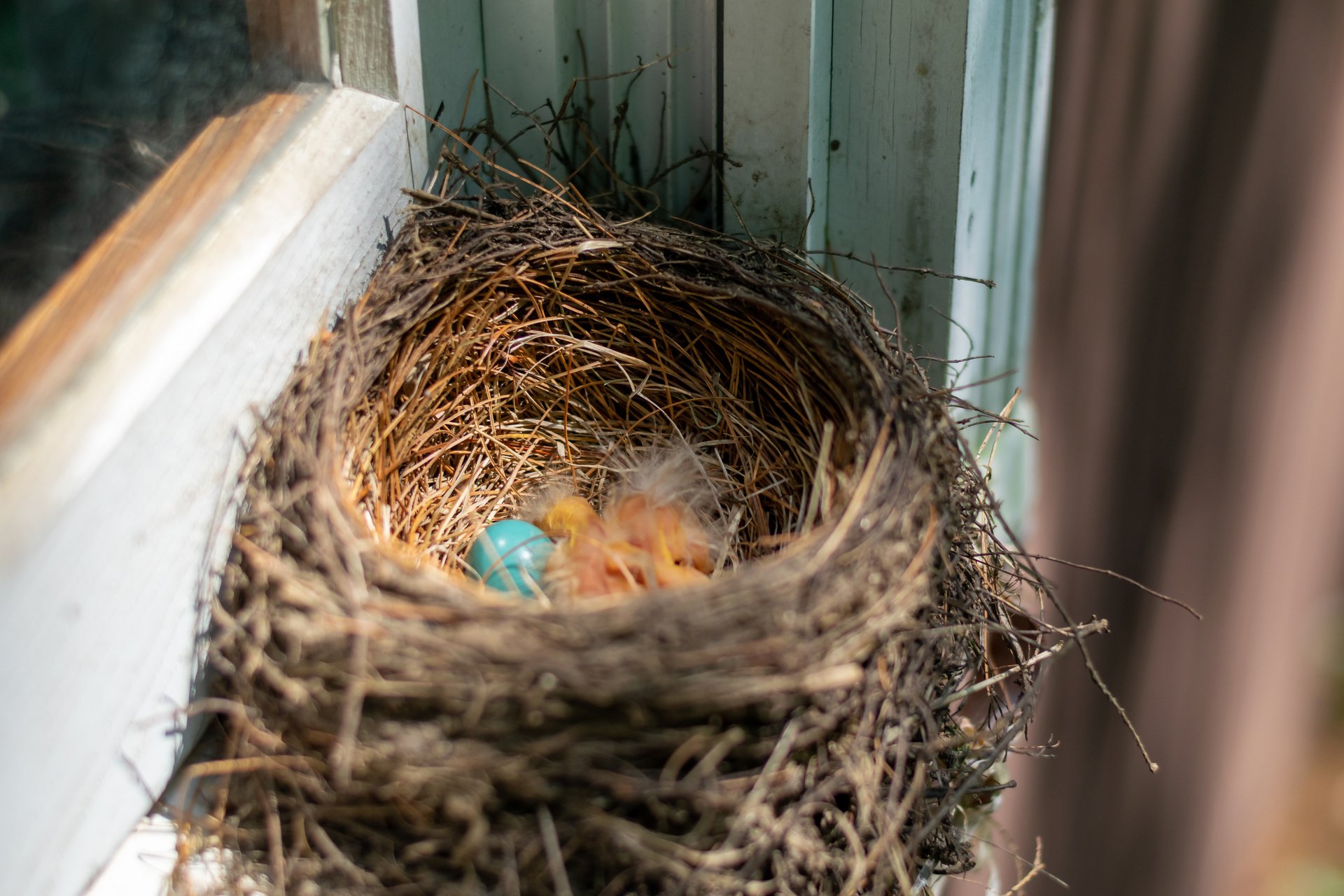Bird Nest Situations & Solutions
The varied landscapes of Massachusetts provide nesting spots for nearly 200 bird species. Where nesting birds and people meet, conflicts can sometimes arise.
Nests In, On, or Near Buildings
A number of bird species nest on balconies and building ledges, in the nooks and crannies of houses, and when it comes to the House Finch, in hanging plants. Observing these nests can be a source of enjoyment. Sometimes, however, nesting behavior can bring birds into conflict with people. This is often the case with the nests of non-native species such as pigeons, European Starlings, and House Sparrows.
Nests in Chimneys
Chimney Swifts are the only Massachusetts bird that builds its nest and successfully raises its young in chimneys. In large chimneys or airshafts they may nest in large numbers, but in a house chimney there is only a single pair. If a homeowner determines that there is a nest in the chimney, usually by the loud chattering of the young as the parents enter with food, there is no reason for concern.
The presence of a nest will not cause a fire or spread disease. The only time it is necessary to intervene is if an active nest has fallen onto the damper or into the fireplace. In this case, every attempt should be made to return the young to the chimney so the parents can continue to care for them.
What To Do with Nests in Undesirable Locations
Do Not Move the Nest
Birds do not possess the power of reason, if the nest disappears the parents will not go searching for it so relocating an active nest is not an option. It’s best to wait until fall or winter to remove nests and exclude birds from buildings. It is also against both federal and state law to disturb am active nest of a native species.
Block Nests Inside Buildings
Once the young are gone, figure out how the birds are entering the building. Encourage adult birds to leave the building by using loud noises inside, and then block openings with the appropriate material.
If birds are nesting in a cavity, it’s important to block the opening immediately after the young birds leave, because the adults will likely return in a day or two to begin another brood.
Securely block the opening with hardware cloth, metal, or wood. Bird netting, sold in garden centers as fruit tree netting, is another option. Be sure to only use mesh that has openings no larger than one-half inch across, so that small birds cannot pass through and will not get caught making an attempt.
If birds are nesting on rafters or building supports, suspend netting to create a false ceiling that will prevent birds from entering those spaces.
Block Nests on Exterior Flat Surfaces
You can seal off a ledge by attaching netting to the wall a few feet above it, draping it over the space, and securing it below the ledge. Another option is to change a flat surface into a slanted one.
Surfaces angled 60 degrees or more do not appeal to nesting birds because the nesting materials placed on the surface will slide off. Use wood or metal to alter the surface.



